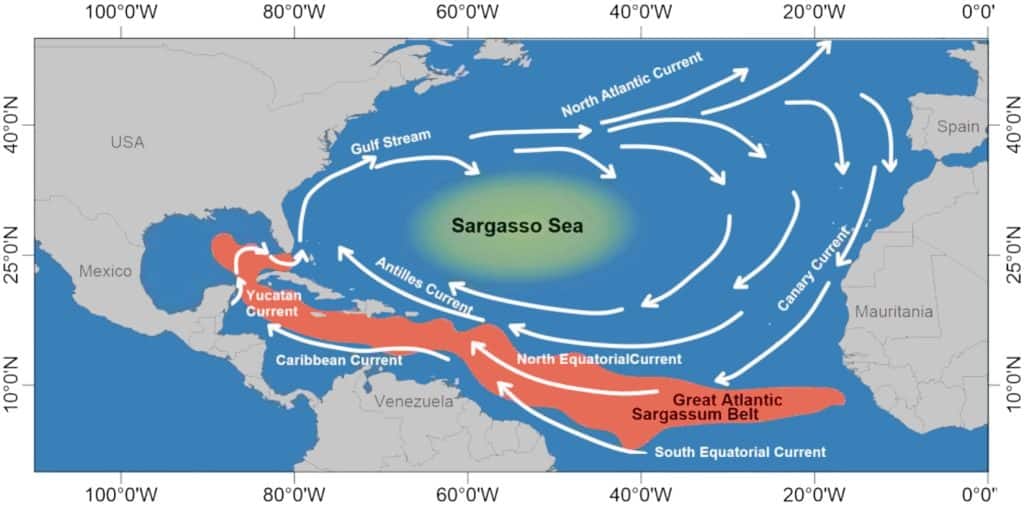Beachgoers along the Gulf of Mexico and the Atlantic Ocean in the Caribbean and Florida are being met by a massive sargassum blob. The Great Sargassum Belt, a 5,000-mile-long area, has doubled in size in both December and January.
This rotting, stinking algae which is invading the shoreline or in the water is a naturally occurring brown seaweed. Composed of gas-filled structures which keep the brown seaweed buoyant, strong currents and the wind is what is bringing the massive blob to the shores.
It is a genus of brown macroalgae in the order Fucales, a planktonic (free-floating) species.


The 13-million-ton mass is a good thing when it is out offshore, but impactful to humans when it gets on beaches. In the ocean, it provides a habitat for hundreds of species of fish and even endangered sea turtles.
Although it is not advised to swim next to it as it can cause the skin to turn red and into an itchy rash, the texture is like a loofah sponge when swimming next to it. Along with the potential for rashes, stinging organisms such as jellyfish can be present among sargassum.
The worst though might be the smell. When sargassum decomposes, the hydrogen sulfide gas produced makes it smell like rotten eggs. This can be extremely harmful to those with pre-existing conditions.
The reason the blob is so big this year is that current conditions are ideal for it to grow. The nutrients from the ocean depths are acting like fertilizer for plants, a great environment for growth.
While there are no records of major blooms prior to 2011, there have been record-setting blooms in 2018 and 2022, but 2023 is setting new records earlier in the season.
While where sargassum accumulates is highly variable, it will almost inevitably wash shore along all Caribbean islands, the Gulf of Mexico, and Southeast Florida.

